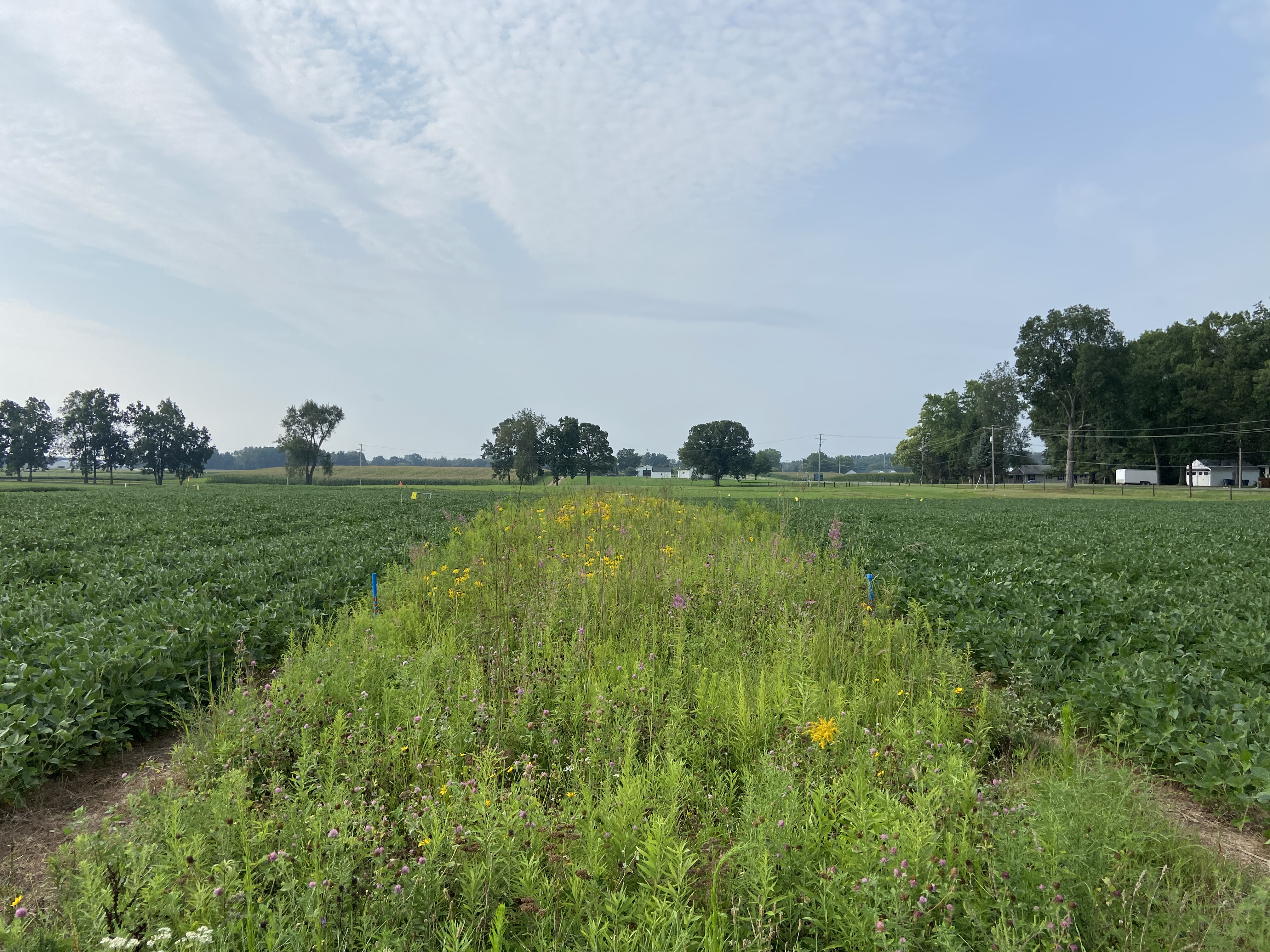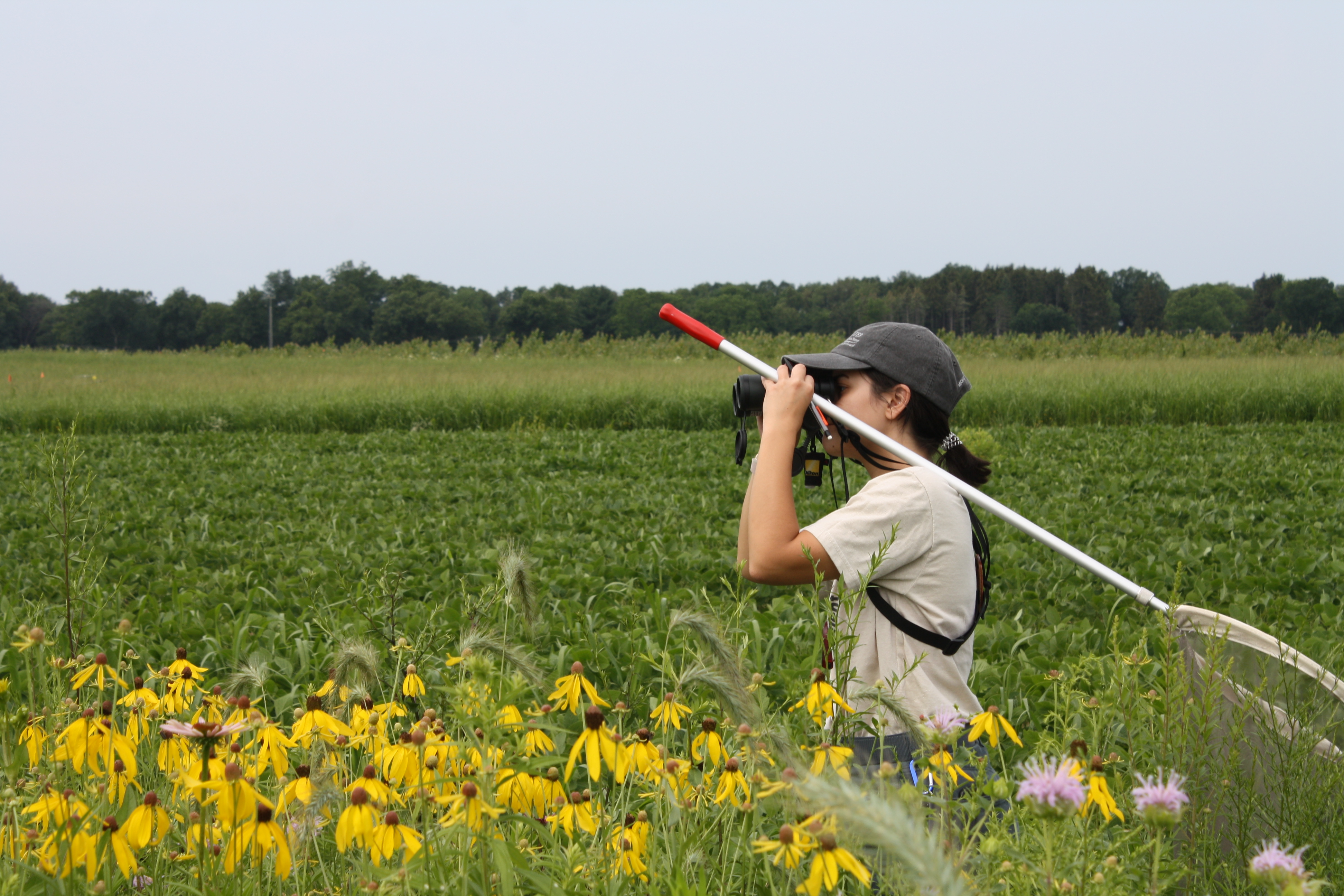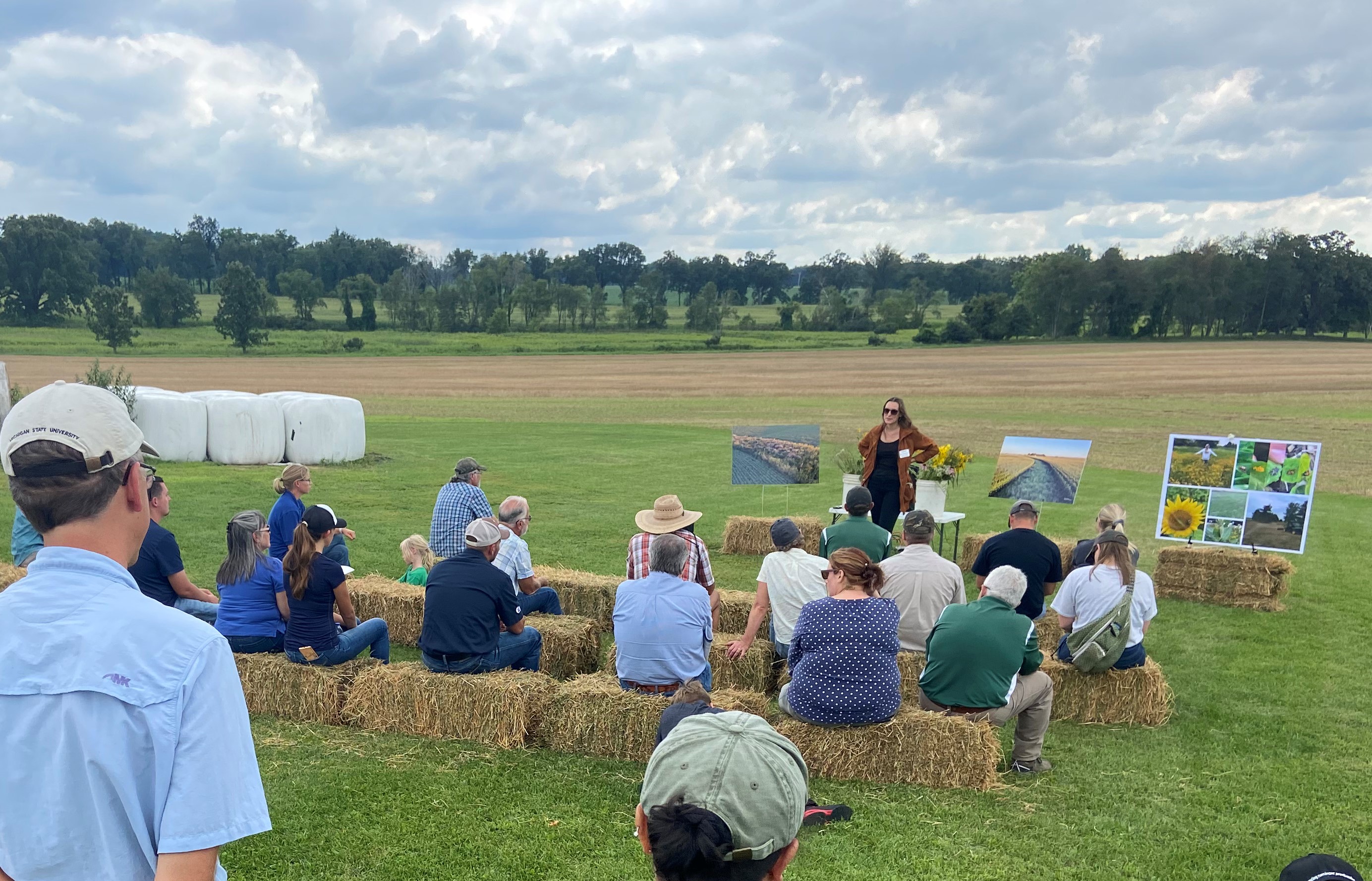Kellogg Biological Station joins multi-state effort to increase the adoption of prairie strips across the Midwest
At the W.K. Kellogg Biological Station, the Long-Term Agroecosystem Research Network (LTAR) and Long-Term Ecological Research (LTER) programs are working to increase the adoption of prairie strips on agricultural landscapes across the Midwest.

Before there were the gently rolling hills of farmland and forest we see today, southwest Michigan’s landscape included large areas of prairie habitat. Dominated by wildflowers, grasses, and sedges, these habitats were maintained by periodic fires and included oak barrens, dry sand prairies, and wetland prairies. Today, only a few remnants of Michigan’s historical prairies remain on the landscape.
Prairie strips, a conservation practice in row crops that protects soil and water while providing habitat for wildlife, are one way to restore these habitats to the region.
Many farmers across the Midwest are implementing prairie strips as a conservation practice on their farms. “For us, prairie strips provided the best opportunity to meet our goal of enhancing our farms’ ecosystem impact while improving farm profitability at the same time,” said Marc Hasenick, of Hasenick Brothers Farm in Springport, Michigan.
At Iowa State University, a team led by Lisa Schulte Moore has been researching prairie strip conservation practices. The Science-based Trials of Row-crops Integrated with Prairie Strips (STRIPS) program has documented strip’s contribution to climate regulation, soil and water protection, and enhancement of biodiversity by providing wildlife and pollinator habitat in row crops. Since the establishment of ISU STRIPS in 2007, they have worked with several farmers and farmland owners to protect 112,707 acres of cropland. They are now a trusted resource for prairie strip implementation and support.
At the W.K. Kellogg Biological Station, the Long-Term Agroecosystem Research Network (LTAR) and Long-Term Ecological Research (LTER) programs are collaborating with the STRIPS team to increase the adoption of prairie strips on agricultural landscapes across the Midwest. Through the development of the MiSTRIPS program, the KBS team will work alongside seven other contributing states. These states will form a regional partnership that delivers programming and networking opportunities to increase the scale and adoption of prairie strips conservation practices on farms.

The creation of MiSTRIPS aligns with broader goals of the LTAR and LTER networks by connecting long-term research to on-farm practices. “Within LTAR we have an exciting place to understand the mechanism of how aspirational agriculture can work, but to really work, it has to have a positive impact for our stakeholders”, said Nick Haddad, Director of the KBS LTER and co-PI of MiSTRIPS.
“MiSTRIPS is a program that allows us to connect LTAR research to our stakeholders,” he added.
MiSTRIPS will help expand STIRPS’ efforts within Michigan by connecting agencies, stakeholders, farmers, and farm landowners to technical support, resources, and networking opportunities and through a series of prairie strip field days, publications, and meetings.
“The sustainability of our agricultural systems impacts us all, but sustainability will be hard to achieve if we are not working toward a unified goal and on a larger scale,” said Fahimeh Baziari, MiSTRIPS Project Coordinator. “MiSTRIPS gives us an opportunity to coordinate with multiple stakeholders to increase conservation practices at the landscape level.”
The MiSTRIPS program kicked off with a field day event at the Hasenick Brothers Farm this past week. The audience included a diverse mix of people including farmers and farm landowners, as well as people representing agencies, organizations and universities who are interested in implementing prairie strips as a conservation practice on Michigan landscapes.

With prairie strips now an eligible practice under the Conservation Reserve Program (CP-43), there is more opportunity for prairie strips to become a common conservation practice for the added ecological benefit that they provide.
You can find more information about STRIPS at Prairiestrips.org. If you have any questions about MiSTRIPS, please contact Fahimeh Baziari at baziari1@msu.edu, Project Coordinator of the Kellogg Biological Station MiSTRIPS project.



 Print
Print Email
Email



